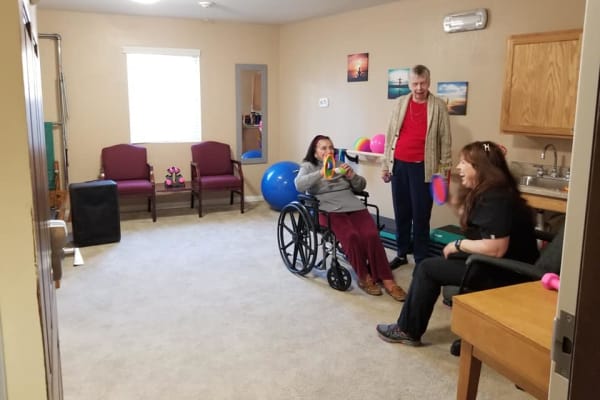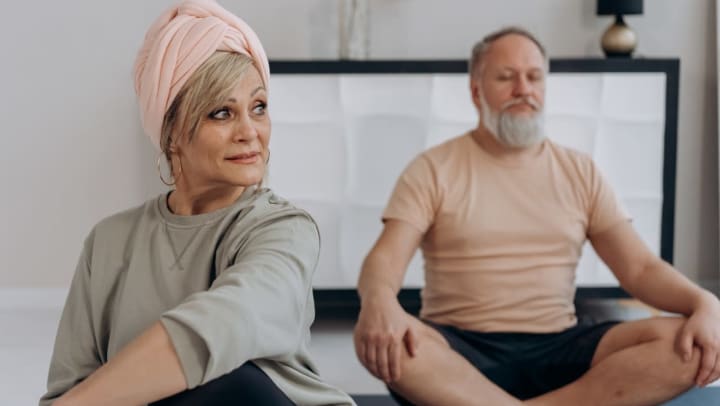How To Increase Bone Density in Seniors
One of the most common injuries in seniors is a broken bone from a fall. As seniors age, their mobility becomes reduced, and the danger of tripping or stumbling becomes more prevalent. A fall, in and of itself, is not necessarily dangerous, but with weakened bones due to Osteoporosis, it can be especially dangerous. Osteoporosis is a disease that thins and weakens the bones. This disease can be caused by a sedentary lifestyle, a lack of calcium, and a lack of Vitamin D.
5 Osteoporosis Exercises for Seniors
As we age, we naturally become less active. Exercise becomes vital to our everyday health, and even a little bit helps. Examples of this exercise can include walking, low-impact aerobics, elliptical training machines, dancing, stair climbing and even gardening. These types of exercises work specifically on the bones in our legs, hips and spine to slow mineral loss. These activities also provide cardiovascular benefits, which boost heart and circulatory system health.
1. Weight Bearing Exercises
Weight bearing exercises can help the body resist gravity and stimulate bone cells to grow. Strength-training builds muscles which also increases bone strength. While swimming and biking are excellent exercises, they are not weight bearing exercises, and thus less effective in combating osteoporosis. Walking, jogging and dancing are much more effective.
2. Flexibility Training
Just as important as strength training, flexibility training will help a senior improve their coordination, and lower the risk of a fall or broken bones. The advantages of flexibility training is that it can be done basically anywhere, without equipment. Tai Chi and posture exercises will keep you steadier on your feet. Yoga and Pilates can improve balance, strength and flexibility. Be sure to consult your physical therapist or physician though, some of these exercises, especially forward bending exercises, can make you more likely to get a fracture.
3. Strength & Resistance Training
This type of exercise helps “load” your bones, putting stress on them. Some research has shown that this is what is needed to stimulate bone-forming cells (also called osteoblasts). Osteoblasts help create more bone tissue, which improves your bone density, making your bones stronger. Resistance training exercise also tends to target the areas of your skeleton that are most likely to fracture, such as your hips, spine, and wrists. It also improves the muscles attached to the bones, as well as your overall coordination and balance.
4. Water Exercises
While swimming and water exercises do not specifically increase bone density, research has found that the mineral content of the women’s bones improved. This has been a fairly constant theme in research of water exercise and bone health: Swimmers’ bone densities have a higher rate of bone turnover is significantly higher meaning their bones became more resistant to fracture and able to repair themselves more effectively.
5. Balance Training
Fall prevention is incredibly important for people with osteoporosis. Stability and balance exercises help your muscles work together in a way that keeps you more stable and less likely to fall. Basic exercises such as standing on one leg or movement-based exercises such as tai chi can improve your stability and balance.
Know Your Limits
While exercise is important, overdoing it can be dangerous. High-impact exercises such as jumping, running or jogging can actually lead to fractures in weakened bones. Choose exercises with slow, deliberate, and controlled movements. Bending and twisting exercises can also be counterproductive. These exercises can lead to compression fractures in your spine if you have osteoporosis. Other activities like bowling, golf or tennis can cause twisting which can also lead to fractures. Check with your doctor to see how healthy your bones are and what are the appropriate exercises for you!
Final Thoughts
Falls and fractures are two of the most common issues to impact seniors day to day. These are easily preventable with some minor lifestyle changes. Different kinds of exercise, and an increase in Vitamin D and Calcium can help maintain, even improve, your bone density leading you to a safer, healthier lifestyle.
Ridgeline Cares About Bone Density
Our programs at Ridgeline's communities are designed to help you live a healthier lifestyle. Balance Fitness is a very popular program, specifically designed for residents of varying cognitive and physical ability by Dr. Chuck McGlade, CEO of Ridgeline, and Patricia Endres, a Ridgeline Recreational Therapist. The fitness program improves core strength, resulting in better balance and fewer falls. We work with physical therapists and primary care physicians to report progress and improved functional fitness. Contact us today to learn more!


